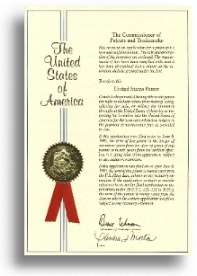- Get link
- X
- Other Apps
 New competitive strategy: the power of a patent portfolio
New competitive strategy: the power of a patent portfolioOf all the strategic arrows in a company's quiver, patenting typically hasn't been considered much of a weapon.
For decades, many businesses obtained patents for unique technology, then buried them in a legal department box, to be dusted off only in cases of obvious infringement. But as intellectual property is increasingly viewed as a way to gain a competitive advantage, patent pursuit is taking on a strategic edge.
Through tactics such as staking out patents early and often, as well as expanding patent portfolios to include different types of patents, companies are strengthening their intellectual property holdings.
"There's been a switch, from companies just looking at which patent infringers to prosecute," said David Schultz, shareholder in Minneapolis-based Halleland Lewis Nilan & Johnson. "Now, they're using patents to negotiate a niche in the market."
This shift from defensive to offense patent strategy has been seen most acutely within the past five years, said Jon Garon, dean and professor of law at Hamline University School of Law in St. Paul. "As recently as 10 years ago, patents were ignored by management. Now, there's tremendous awareness that patents and other intellectual property are key corporate assets."
Patent primer
Although companies have been using patents more strategically in the past five years, in some ways, they're simply using the laws properly, Garon said. "Patent law was designed to be offensive in nature rather than defensive. It was created to encourage companies to go into the market."
"There's been a complete change in mindset in terms of these patents," he said. "People have come to see them as an important form of protection."
"Just having one patent isn't enough to stop the competition," Lasky said. "But, when you have many together, they represent a true strategy in terms of a company's direction, and it can be very powerful."
Getting strategic
Adonis Neblett, chair of the Intellectual Property Group at Minneapolis-based Fredrikson & Byron, said companies now look at how patents fit into broad strategies. "Patents give you a picket fence to shore up your technology, and make sure someone else doesn't enter your area of innovation," Neblett said. "But they also give you the opportunity to look at broader applications of what you have."
- Get link
- X
- Other Apps
Comments
Post a Comment